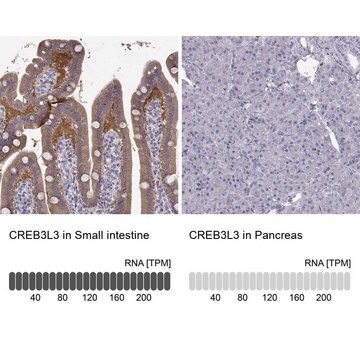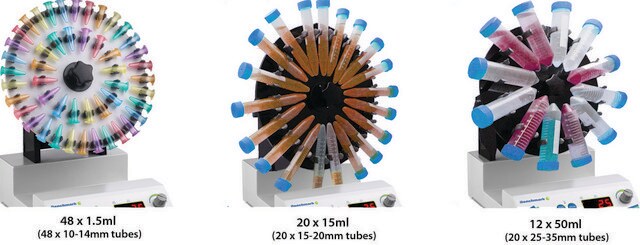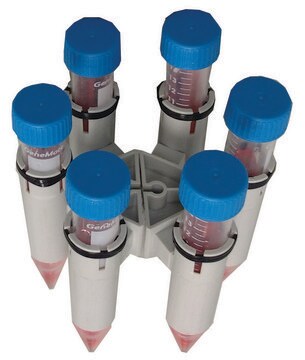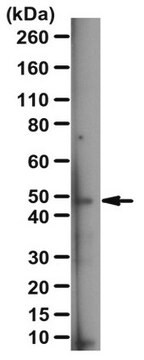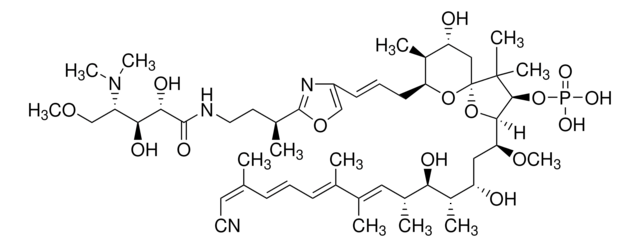ABE2973
Anti-CREB-H/CREB3L3
Synonyme(s) :
Cyclic AMP-responsive element-binding protein 3-like protein 3, Transcription factor CREB-H, cAMP-responsive element-binding protein 3-like protein 3
About This Item
Produits recommandés
Source biologique
rabbit
Niveau de qualité
Forme d'anticorps
purified antibody
Type de produit anticorps
primary antibodies
Poids mol.
calculated mol wt 49.08 kDa
observed mol wt ~45 kDa
Produit purifié par
using Protein A
Espèces réactives
mouse
Réactivité de l'espèce (prédite par homologie)
human
Conditionnement
antibody small pack of 100
Technique(s)
ChIP: suitable
immunofluorescence: suitable
immunohistochemistry: suitable
immunoprecipitation (IP): suitable
western blot: suitable
Isotype
IgG
Séquence de l'épitope
Internal
Numéro d'accès Protein ID
Numéro d'accès UniProt
Température de stockage
-10 to -25°C
Informations sur le gène
human ... CREB3L3(84699)
Spécificité
Immunogène
Application
Evaluated by Western Blotting in lysate from wild-type Mouse liver tissue.
Western Blotting Analysis (WB): A 1:1,000 dilution of this antibody detected CREB-H in lysate from wild-type Mouse liver tissue, but not in lysate from Mouse liver with CREB-H knockout.
Tested Applications
Chromatin Immunoprecipitation Analysis (ChIP): A representative lot detected CREB-H/CREB3L3 in Chromatin Immunoprecipitation applications. (Zhang, K., et al. (2006). Cell. 124(3); 587-599).
Western Blotting Analysis (WB): A representative lot detected CREB-H/CREB3L3 in Western Blotting applications. (Kim, H., et al. (2014). Endocrinology. 155(3); 769-782).
Immunohistochemistry Applications: A representative lot detected CREB-H/CREB3L3 in Immunohistochemistry applications. (Kim, H., et al. (2014). Endocrinology. 155(3); 769-782).
Immunofluorescence Analysis (IF): A representative lot detected CREB-H/CREB3L3 in Immunofluorescence applications ( (Zhang, K., et al. (2006). Cell. 124(3); 587-599).
Immunoprecipitation Analysis: A representative lot immunoprecipitated CREB-H/CREB3L3 in Immunoprecipitation applications. (Zhang, K., et al. (2006). Cell. 124(3); 587-599).
Note: Actual optimal working dilutions must be determined by end user as specimens, and experimental conditions may vary with the end user.
Description de la cible
Forme physique
Reconstitution
Stockage et stabilité
Autres remarques
Clause de non-responsabilité
Vous ne trouvez pas le bon produit ?
Essayez notre Outil de sélection de produits.
Code de la classe de stockage
12 - Non Combustible Liquids
Classe de danger pour l'eau (WGK)
WGK 2
Point d'éclair (°F)
Not applicable
Point d'éclair (°C)
Not applicable
Certificats d'analyse (COA)
Recherchez un Certificats d'analyse (COA) en saisissant le numéro de lot du produit. Les numéros de lot figurent sur l'étiquette du produit après les mots "Lot" ou "Batch".
Déjà en possession de ce produit ?
Retrouvez la documentation relative aux produits que vous avez récemment achetés dans la Bibliothèque de documents.
Notre équipe de scientifiques dispose d'une expérience dans tous les secteurs de la recherche, notamment en sciences de la vie, science des matériaux, synthèse chimique, chromatographie, analyse et dans de nombreux autres domaines..
Contacter notre Service technique